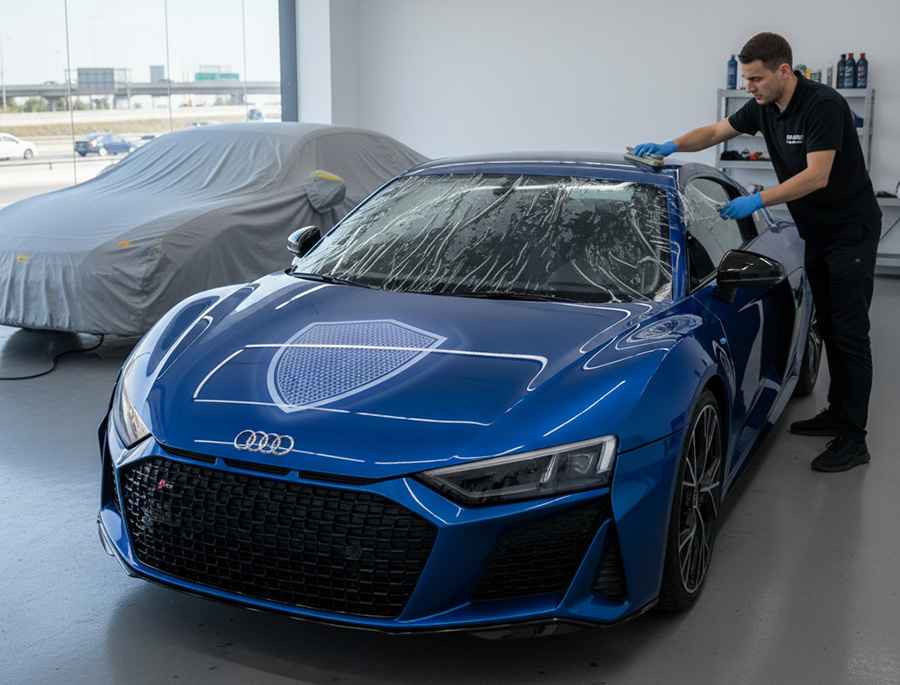5 Ways to Protect Your Car From Unexpected Damage
Owning a car is a major investment, and keeping it in great condition means more than just washing it on weekends. Every day, your vehicle faces risks — from flying gravel and road debris to harsh weather and careless drivers.

While you can’t control what happens on the road, you can take smart steps to protect your car from unexpected damage. One of the best and most underrated solutions is windscreen protection film — but that’s just one piece of the puzzle.
Here are five effective ways to keep your car safe, clean, and looking new.
1. Apply a Windscreen Protection Film
The front windscreen is one of the most vulnerable parts of your car. Every time you drive, it faces dust, stones, insects, and even UV rays. Over time, these can cause chips, cracks, or dullness — and replacing a windscreen can be costly. That’s where windscreen protection film comes in.
This transparent, high-strength layer acts like an invisible shield. It absorbs the impact of small debris, preventing chips and cracks from forming. It also blocks harmful UV rays that can weaken glass and damage your car’s interior.
Many films are self-healing, meaning minor scratches fade away in the sun. Installation is quick, and it doesn’t affect visibility or your car’s sensors.
If you drive on highways, construction zones, or rough terrain, investing in a windscreen protection film can save you hundreds of dollars in potential repairs — and keep your view crystal clear.
2. Use Paint Protection Film for the Exterior
While the windscreen takes the brunt of flying debris, your car’s paint faces a daily battle against dust, bird droppings, and road salt. Paint protection film (PPF) provides a durable, invisible layer that guards against scratches, fading, and stains. This thermoplastic urethane film preserves your car’s factory finish while maintaining its shine.
Professional PPF installation can cover vulnerable areas like the hood, bumper, and side mirrors. It’s a must for those who park outside or frequently drive long distances. With PPF and windscreen protection film combined, your car will have a complete armor package against daily wear.
3. Park Smart and Stay Covered
Where you park your car often determines how long it stays in good shape. Parking under trees might seem like a good idea for shade, but it exposes your car to sap, bird droppings, and falling branches.
On the other hand, open parking lots can lead to sun damage or minor dents from other vehicles.
If you can, park in a garage or under a covered carport. When that’s not possible, consider using a high-quality car cover — especially one with UV and weather resistance. It keeps your paint and glass protected from harsh sunlight, rain, and pollutants.
Combined with windscreen protection film, it adds an extra layer of defense against natural elements.
4. Regularly Clean and Wax Your Vehicle
Dirt and grime aren’t just cosmetic issues. When left untreated, they can wear down paint and corrode metal parts. Regular washing removes contaminants like salt, tar, and insects that stick to your car’s surface. Use a microfiber cloth and gentle automotive soap to avoid scratches.
After washing, apply a layer of wax or ceramic coating. These products create a smooth, hydrophobic barrier that repels water and dirt. Waxing also adds depth to your car’s color and prevents UV oxidation. If you already have windscreen protection film or PPF installed, keeping your car clean helps extend its lifespan and maintain clarity.
5. Drive Defensively and Maintain Proper Distance
Even with all the protective gear, safe driving habits are your best defense. Maintain a reasonable distance from the car ahead, especially on gravel roads or highways where debris can fly up. Avoid tailgating trucks carrying loose materials like sand or rocks.
Defensive driving not only reduces the risk of accidents but also protects your car from unnecessary damage. When combined with windscreen protection film, this habit ensures that even if debris does hit your glass, the film absorbs the impact instead of the windscreen cracking.
Final Thoughts
Your car faces countless hazards every time you hit the road, from unpredictable weather to road debris and UV exposure.
But with simple, proactive steps — like applying windscreen protection film, using paint protection, parking wisely, cleaning regularly, and driving safely — you can extend the life of your vehicle and preserve its appearance for years.
Protection isn’t just about looks; it’s about value. Taking the time to safeguard your car today means fewer repairs, lower maintenance costs, and more confidence every time you drive.
After all, your car protects you — so it’s only fair you return the favor.